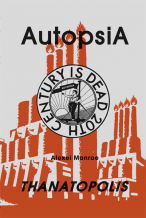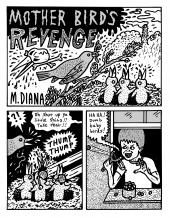| Umělec 2003/1 >> Balkan Art Is a Compliment in Vienna | Просмотр всех номеров | ||||||||||||
|
|||||||||||||
Balkan Art Is a Compliment in ViennaUmělec 2003/101.01.2003 Denisa Kera | balkans | en cs |
|||||||||||||
|
"For ages now the Balkans and everything from the Balkans were considered a symbol of the “betrayal” of European values, either for the violent Islamization in the Middle Ages, or more recently, for the bloody ethnic conflicts. At the end of the 20th century, Hector Hugh Munro, a war correspondent in the Balkans, alias Saki, the famous English satirist, uses the word Balkan as an insult and a synonym for chaos and violence. This summer in Vienna, however, the term has been greatly rehabilitated, and has even taken on the new meaning of “interesting art.” This shift is a consequence of the exhibition Blood & Honey / The Future is in the Balkans, which was organized by the daring curator Harald Szeeman for the gallery in the large building housing Essl collection on the outskirts of Vienna. The exhibition is open until September 28 and presents the works of 75 artists from 11 Balkan countries. The works in various ways confront our “European” consciousness with everything sinister, forgotten, and “retarded” that we have in connection with the Balkans.
The way in which contemporary art in the Balkans deals with political conflicts and its reputation is not as we might expect it to be. The relationship between art and politics is not as Walter Benjamin identified: in opposition between communism as a “politicized art” and fascism as an “aestheticized politics.” It is not true that every political ideology adopts a certain aesthetics that often defines its character much more clearly than complicated political and sociological analyses. In the case of the Balkans, the equation of politics and art is extended with folklore. And it is the relationship of folklore, art, and politics, which is to a great extent apparent in many of the exhibited works in Vienna. With the onslaught of new technologies, western art has suffered the loss of the aura of the artwork. Reproduction has led to the loss of the subject type that “contemplates” the authenticity and unity of an artistic work — the theme of many works in the Balkans is actually the “loss” or the disillusionment of folklore and its political manipulation. The spectator in the cinema is a new subject for Benjamin; the spectator does not contemplate the work, but he lets himself be amazed and shocked in a collective experience. In this exhibition, the new type of subject is sought in certain remnants and reminiscences of traditions and folklore, which contemporary media so frequently parody and disparage. The folklore and tradition in the Balkans have played a seminal role in creating all the political ideologies and nationalistic myths. Communism and fascism were not attempts to preserve the “aura,” but the effort to preserve folklore, since it is folklore which enables us to get along with such powerful ideologies. The works displayed embody various artistic strategies on how to neutralize nationalistic and folklore-based slogans and motifs, as well as mistrust and uncertainty. This uncertainty and embarrassment when encountering new “symbols” and languages is expressed, for instance, in Fuck You, a photograph record of a performance by Albanian artist Sokol Bequiri. A typical Albanian family with the flags of Albania, as can be seen in commercials, makes the words “Fuck You.” The flag as a symbol of national identity and pride becomes an ironic device to come to terms with the arrival of the new culture of consumption, branded by the “famous” English expression heard in almost every American film. The photograph is an ironic “nod,” as well as an expression of disgust for the globalization process. A similarly ironic nod towards globalization is another English statement by Serbo-Croatian artist Mladen Stilinovic, who simply wrote on a large canvas: “An artist who cannot speak English is no artist.” Transition (2001), the descriptive title of the triptych photography by Albanian artist Erzen Shkololli, confronts the old and new symbols of the era. Transition is a set of three photographs of the artist: in the first he is a child wearing the circumcision cloak and hat after the performed ritual; in the second he is now older and wearing the red scarf of the Communist children’s organization the Pioneers; and in the last the artist is an adult standing in the background with European Union flag, the nimbus of stars around his head. The whole “transition” seems somewhat naive and comical. Muslim, Communist, and joining the Euro-pean Union rituals standing next to each other expressing a negative understanding of using various symbols and our identification with them. Inscriptions and slogans are the basic means of political and “cultural” communication in the Balkans. They often convey numerous folklore remarks, and connotations with myths. A typical nationalistic slogan: “God loves Serbs,” refers to the fact that Serbs are the nation ordained by God, as is paralleled in the name of the installation by the Serbian artist Dragoljub Todosijevic. The installation is composed of a large black swastika with a text in Gothic script about the suffering mother, who, stricken by bad luck and ill health, walks through Belgrade cursing: “God in Heaven and socialism on earth and her own endless stupidity.” The identification of the mother with mother earth is a typi cal nationalist cliché rooted in the epic songs about the mothers of heroes. Another daring step is the use of nationalistic and epic motifs in the context of fascist symbols, and the everyday reality of chairs, buckets hanging from the sides of the swastika, representing the unhappy life of the ordinary Serbian people. The description of the fate of the mother written in strange characters filled with fascist connotations, points to the dark nature of life. Still, it bears a tone of personal narrative about the tragedy of many people in this land. The artist succeeded in neutralizing the nationalistic power of the epic symbol of the mother and earth, and still preserves the evidence of individual tragedy. The context of foreign history and strange characters negates the sovereignty of similar nationalistic phrases about mother earth and that “God loves Serbs.” The presence of the chairs and buckets create a feeling of anxiety and uncertainty. The symmetry of everyday objects fulfills the function of every ideology: out of everyday life an abstract structure is created, an impersonal (mythic and historic) mission. The installation gives evidence of how nationalist slogans demean the life of an individual, and how difficult it is then to understand the “life of a mother” in a different context than the epic or historic. Women at work — Washing by Maja Bajevic from Bosnia is a performance record which also focuses on inscriptions and slogans. Embroidered pieces of cloth with famous quotations and slogans by the “father” of Yugoslavia, Josip Broz (Tito), depict the typical household chores of women in the Balkans. Pieces of cloth are torn and damaged to resemble dishcloths or bed sheets; they were made and washed in public in the Istanbul baths by the artist and two women — refugees from Srebenica. The neglected appearance of the damaged clothes reflects the disappointment and nostalgia for a lost land. Washing dirty clothes signifies the emptying of phrases and illusions and the revealing of their real face. The video of the washing of the clothes in Istanbul baths (hamamu) looks idyllic, as in Turkish Baths by Jeana Auguste-Dominique Ingres, and sharply sets up a sharp contrast with the cheerful phrases of the Communists, such as: “The belief that women should stay at home to do household chores is reactionary, and has nothing to do with the role of women in socialistic society.” The confrontation of embroidered cloth, video, and the painted picture resembles the eighth scene from Joyce’s Finnegan’s Wake, in which women also “wash” the whole of human history with remarks and gossip. Embroidering as a typical female activity in the Balkans is mirrored in the Gobelin tapestry Needlepoint (2002) by the Serbian artist Jelena Radic. Instead of the usual romantic landscapes — typical of the classical medium of Gobelin tapestry — Jelena Radic here stitched a porn scene. By confronting kitsch work from the home and a typical product of the consumption of culture, she unmasks the nature of both “media,” and shows how they surprisingly relate to each other, as well as conflict. The finely framed Gobelin tapestry, the same kind that can be found everywhere all over the Balkans, can depict any scene, which becomes “invisible” within the medium. Similar to the Gobelin tapestry, myths, folklore, and the past can also justify any crime or evil, frame it and work it out so that it will merge into the landscapes and further romantic themes. Nationalist actions in the Balkans are simply more Gobelin tapestries, showing the loss of the ability to distinguish the past from the present, individual responsibility from collective disillusionment. The confrontation of folklore and housework with contemporary media may, on the one hand, look like a severe criticism of the Balkans; on the other hand, this approach enables a new and specific artistic expression. The mutual reception among traditional and new media creates a certain timelessness that is so typical of the Balkans. And it is this timelessness which often causes the borders to diminish between the beautiful and horrible, between the ecstatic intoxication, irony and absolute dead- end in the artworks displayed, as well as diminishing the borders within the history of the Balkans. "
01.01.2003
Рекомендуемые статьи
|
|||||||||||||
|
04.02.2020 10:17
Letošní 50. ročník Art Basel přilákal celkem 93 000 návštěvníků a sběratelů z 80 zemí světa. 290 prémiových galerií představilo umělecká díla od počátku 20. století až po současnost. Hlavní sektor přehlídky, tradičně v prvním patře výstavního prostoru, představil 232 předních galerií z celého světa nabízející umění nejvyšší kvality. Veletrh ukázal vzestupný trend prodeje prostřednictvím galerií jak soukromým sbírkám, tak i institucím. Kromě hlavního veletrhu stály za návštěvu i ty přidružené: Volta, Liste a Photo Basel, k tomu doprovodné programy a výstavy v místních institucích, které kvalitou daleko přesahují hranice města tj. Kunsthalle Basel, Kunstmuseum, Tinguely muzeum nebo Fondation Beyeler.
|


































 We Are Rising National Gallery For You! Go to Kyjov by Krásná Lípa no.37.
We Are Rising National Gallery For You! Go to Kyjov by Krásná Lípa no.37.
Комментарии
Статья не была прокомментированаДобавить новый комментарий